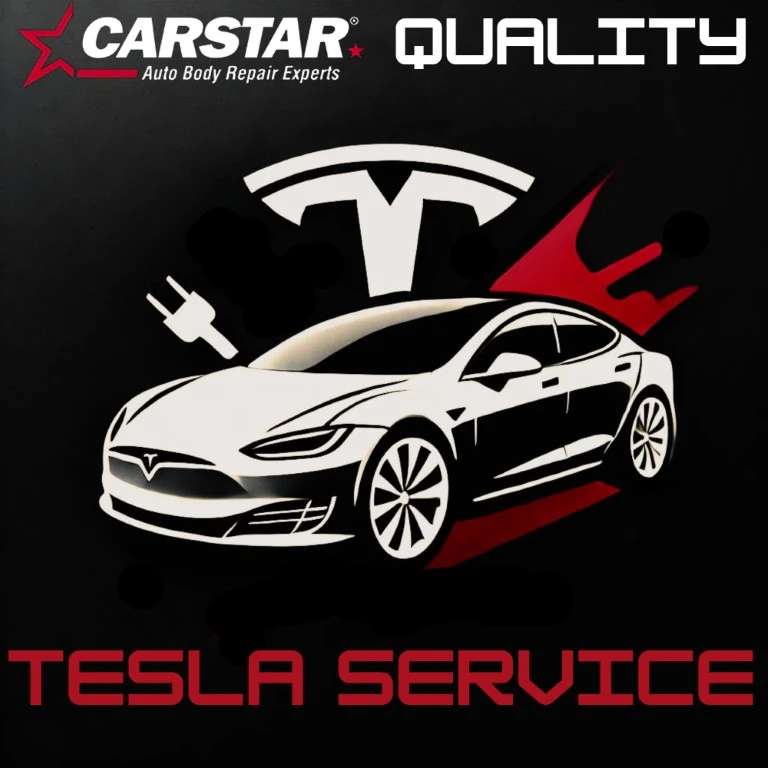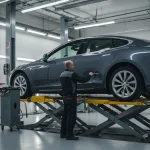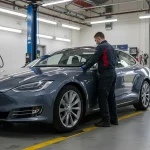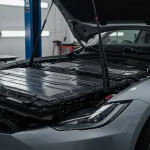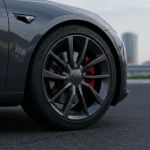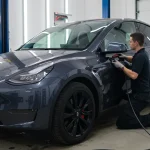When your Tesla is involved in an accident, repairing it isn’t just another body shop job. Tesla collision repair requires a radically different approach compared to traditional auto body repair due to the vehicle’s unique construction, materials, software integration, and safety systems. At Quality Tesla Service, specializing in certified Tesla collision repair, we know that treating your Tesla like a standard gas-powered vehicle can lead to compromised safety, performance, and even voided warranties.
In this article, we’ll break down exactly what makes Tesla collision repair so different—and why trusting a certified Tesla repair center like ours in Abington Township, PA is the smartest move. You’ll also learn what to expect, common myths, and crucial things to consider before choosing a repair shop.
What Sets Tesla Repairs Apart from Conventional Repairs?
Tesla vehicles aren’t built like most cars—and they certainly don’t repair like them either. Here’s why:
1. Aluminum-Intensive Structure
Most Teslas use aerospace-grade aluminum in their bodies, which is lighter and more rigid than traditional steel. This material demands specialized equipment and training to weld, cut, and shape—standard auto body shops simply aren’t equipped.
2. High-Voltage Systems and Battery Packs
Electric vehicles, especially Teslas, house powerful lithium-ion batteries that can be hazardous if improperly handled. Collision repair requires careful insulation, disconnection, and reactivation procedures—only Tesla-certified technicians are trained to do this safely.
3. Advanced Driver Assistance Systems (ADAS)
Tesla’s Autopilot and Full Self-Driving (FSD) features rely on precisely calibrated sensors and cameras. Post-collision repairs require digital alignment, radar calibration, and software integration—tasks only certified Tesla repair centers can guarantee.
4. Proprietary Software and Diagnostics
Teslas don’t respond to generic diagnostics. Access to Tesla’s proprietary software is restricted to certified shops. Without it, even if cosmetic damage is repaired, deeper issues could go undetected.
Comparison Table: Tesla vs. Traditional Collision Repair
| Feature | Tesla Collision Repair | Traditional Auto Body Repair |
|---|---|---|
| Body Material | Aerospace-grade aluminum | Steel or standard-grade aluminum |
| Technician Training | Tesla factory-certified | General auto repair certification |
| Battery Handling | Requires high-voltage safety protocol | Not typically required |
| Autopilot/ADAS Calibration | Requires OEM software calibration | Rarely equipped to handle |
| Parts & Components | OEM Tesla parts only | Often use aftermarket parts |
| Access to Manufacturer Software | Tesla proprietary software required | Not available |
| Risk of Warranty Voiding | High if done outside certified network | Less applicable |
Technical Considerations & Specs
Tesla-Specific Repair Factors
| Component | Special Requirements |
|---|---|
| Battery Pack | Insulated environment; high-voltage safety |
| Aluminum Panels | Non-ferrous welding and riveting techniques |
| Cameras & Sensors | Factory calibration tools |
| Paint Matching | Tesla-specific codes; precise color matching |
| Structural Repairs | Tesla-approved straightening and frame tools |
Things to Know Before Choosing a Repair Shop
1. Certification Matters
Tesla’s certification isn’t just a badge—it’s a guarantee of meeting strict facility, equipment, and training standards. Always verify that your repair shop is Tesla Certified.
2. Ask About OEM Parts
Using anything but OEM (Original Equipment Manufacturer) parts can compromise your car’s integrity. We use only OEM Tesla components.
3. Battery Safety First
A damaged battery isn’t just a performance issue—it’s a safety hazard. We run complete diagnostics and follow Tesla’s battery safety procedures to the letter.
4. Autopilot Recalibration
Even a minor fender-bender can knock a sensor out of alignment. Your repair should include full system diagnostics and recalibration—especially if you rely on Autopilot or FSD.
Bonus Tips for Tesla Owners
- Insurance Check: Ensure your insurer covers Tesla-certified repairs; not all policies do by default.
- Pre-Repair Diagnostic: Request a digital health scan of your Tesla before any repair work starts.
- After Repair Test Drive: Always test advanced features (lane assist, adaptive cruise, etc.) post-repair.
Trending Discussions Among Tesla Owners
- Can I repair my Tesla at any shop? Technically yes, but doing so may void warranties and compromise safety.
- Is aluminum more expensive to fix? Yes—but it also offers better performance and crash energy management.
- Do all Tesla repairs require recalibration? Most do, even if it seems minor. Calibration ensures your car drives exactly as Tesla intended.
Ready to Achieve Peace of Mind?
Your Tesla isn’t just another vehicle—it’s a sophisticated piece of engineering. Protect its performance, safety, and value with certified collision repair from Quality Tesla Service. We combine precision craftsmanship with deep EV expertise to restore your vehicle to Tesla’s exacting standards.
- Call us today: (215) 355-5019
- Email us: info@qualitycarstar.com
- Schedule Your Tesla Repair
Your Tesla Repair Questions Answered
Can a regular body shop fix my Tesla?
Not safely. Without Tesla certification, they won’t have access to required tools, OEM parts, or repair protocols.
What happens if the battery is damaged?
It must be inspected and possibly quarantined. Battery damage can lead to thermal runaway if mishandled. See “Battery Safety First” above.
How long does Tesla collision repair take?
Timelines vary based on parts availability and repair type, but a certified shop can provide realistic timelines upfront.
Will my insurance cover certified Tesla repairs?
It depends on your policy. We work with all major insurers and can help advocate for proper Tesla-certified work.
Why does aluminum repair cost more?
It requires special tools, skilled technicians, and precise welding techniques not used in traditional body repair.
